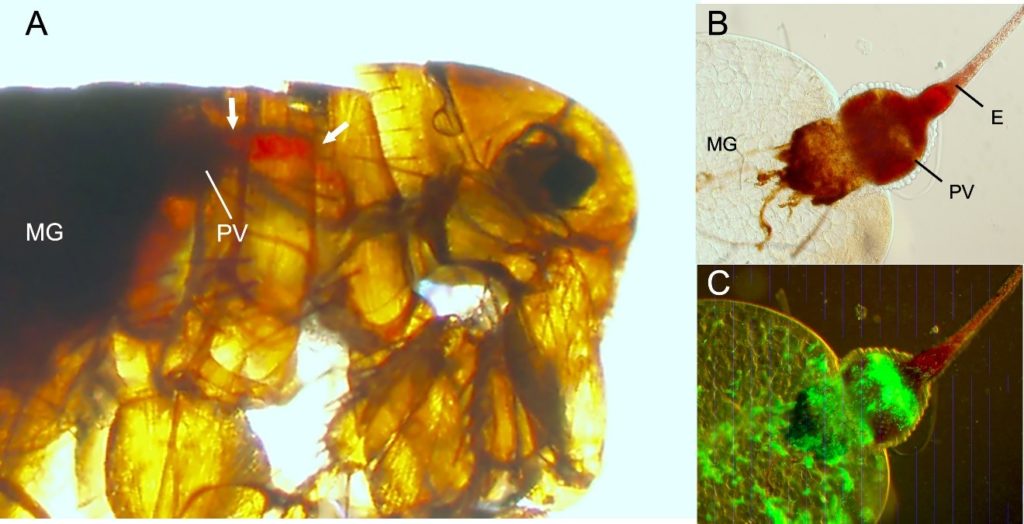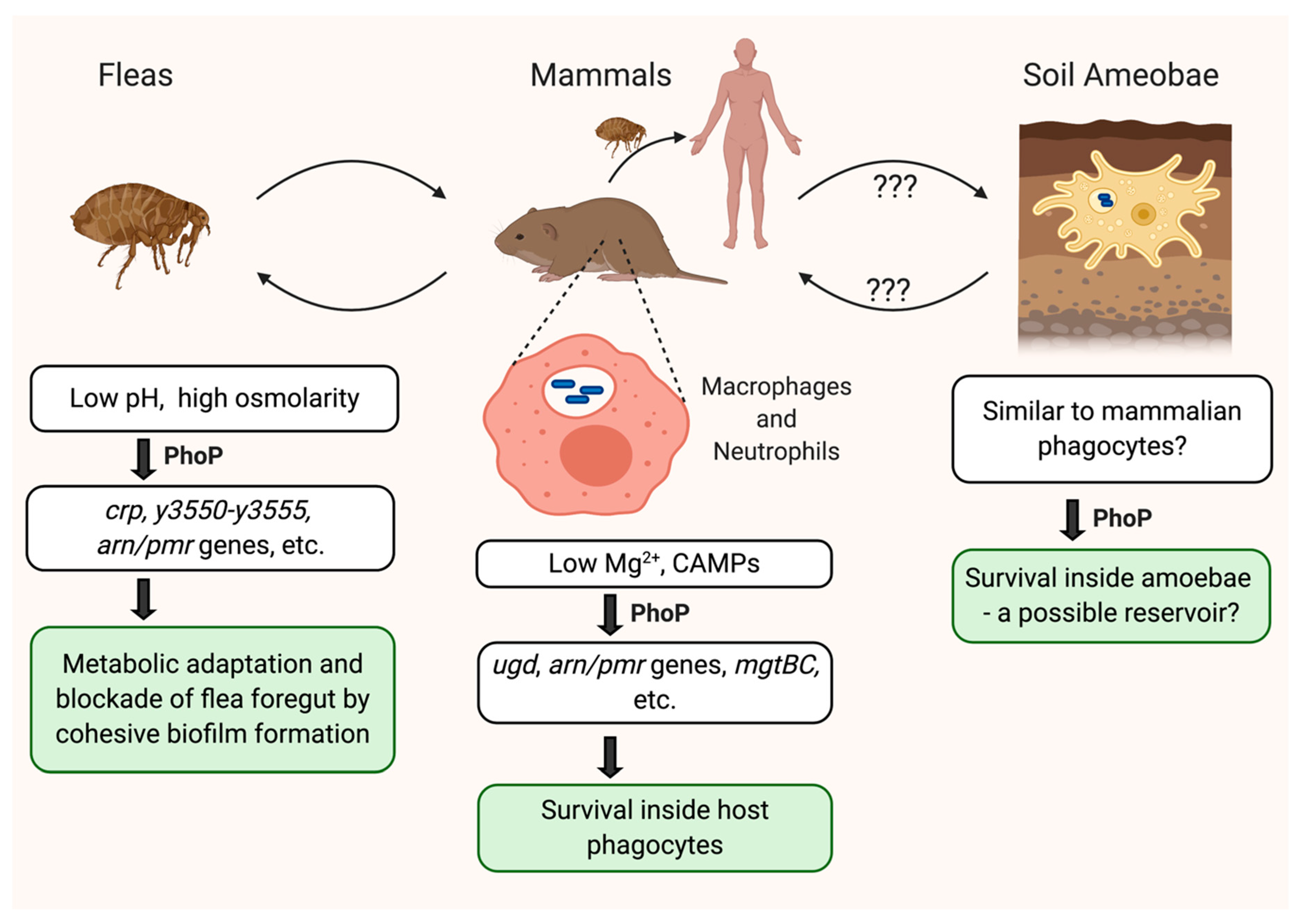Plague Transmitted by a Flea Is an Example of
Not all fleas effectively transmit plague. Flea larvae are very sensitive to moisture excess and dehydration 2 conditions that are caused by abiotic factors mainly airsoil humidity and temperature factors likely to.

Chasing After The Human Flea A Controversial Bubonic Plague Vector Bugbitten
Which of the following is a fomite.

. Plague bacteria are most often transmitted by the bite of an infected flea. The organism that causes plague Yersinia pestis lives in small rodents found most commonly in rural and semirural areas of Africa Asia and the United States. Pestis bacterium which is spread mostly by fleas on rodents and other animals.
Septicemic plague is the result of plague bacteria multiplying in the blood and disseminating throughout the body. Plague is principally a flea-borne disease of rodents characterized by alternating periods of low transmission enzootic plague and high transmission epizootic plague within rodent populations which vary in susceptibility to the disease. The flea then carries the bacteria humans should they bite.
Those that do become infective days or weeks after ingesting blood from a plague-infected rodent. The human flea Pulex. The organism is transmitted to humans who are bitten by fleas that have fed on infected rodents or by humans handling infected animals.
Is an opportunistic pathogen. The major significance of Kochs work was that. Haemofelis can infect humans especially those with compromised immune systems.
Pneumonic plague occurs most commonly because of bacteremic spread in untreated bubonic plague secondary pneumonic plague. Haemofelis can cause fever and anemia in cats Herold says. Like some other forms of gram-negative sepsis septicemic plague can cause disseminated intravascular coagulation and is almost.
There is also some evidence that M. It kills rapidly in 2 to 3 days if not treated. And septicemic plague which results from the hematogenous spread of bubonic or pneumonic.
Plague has 3 main clinical syndromes. Unprotected contact with infectious bodily fluids or contaminated materials. Dogs and cats may also bring plague-infected fleas into the home.
Plague is a serious bacterial infection thats transmitted primarily by fleas. D Vector. Plague is a potentially life threatening disease that is moved among wild rodent populations by fleasprimarily the rock squirrel flea.
Septicemic plague is one of the three main forms of plague. There are more than 2000 types of fleas in existence but it is primarily the Oriental Rat Flea that is attributed to the plague bacteria. Irritans may not be a significant plague vector but a biologic indicator of the conditions that are conducive for the occurrence of plague in a village.
An infection of the red blood cells M. Then the hungry infected fleas seek out blood from other hosts including people and household pets. Fleas are small 113 to 118 inch dark reddish-brown insects that feed on blood.
Flea larvae are very sensitive to moisture excess and dehydration 2 conditions that are caused by abiotic factors mainly airsoil humidity and temperature factors likely to. Humans can be infected through. Its an example of a disease that can spread between animals and people a zoonotic disease.
Fleas are small insects that survive by feeding on animal or human blood. People can get plague by being bitten by an infected flea touching infected animals or inhaling droplets from the cough of an infected person or animal the CDC. Historically plague outbreaks have started slowly with transmission of the disease agent a bacterium via the bite of infected rodent fleas primarily.
Plague is an infectious disease caused by the bacteria Yersinia pestis a zoonotic bacteria usually found in small mammals and their fleas. In Colorado the primary flea vector is the rock squirrel flea and the primary hosts are rock squirrels. Because fleas are equal opportunity feeders an infected flea can transmit the parasite to both you and your pet.
Pneumonic plague which is spread by inhalation of droplets from infected humans or animals. Are changes felt by the patient. Sometimes fleas can infect people or pets with the germs that cause flea-borne typhus plague or cat scratch disease.
Their bites can cause discomfort itchiness and irritation. The bite of infected vector fleas. 35 The most likely mode of transmission of pneumonic plague between humans is A Direct contact.
Septicemic plague is a life-threatening infection of the blood most commonly spread by bites from infected fleas. When a flea bites a human and contaminates the wound with regurgitated blood the plague-causing bacteria are passed into the tissue. Pestis can reproduce inside cells so even if phagocytosed they can still surviveOnce in the body the bacteria can enter the lymphatic system which drains interstitial fluidPlague bacteria secrete several toxins one of which is known to.
Irritans a species commonly associated with denning fox. It is transmitted between animals through fleas. Bubonic plague is the most common form of naturally occurring plague and is typically acquired through the bite of an infected flea.
Humans who are bitten by the fleas then can come down with plague. Plague transmitted by a flea is an example of. According to the CDC plague in people often happens after a large number of infected rodents die.
Bubonic plague which is characterized by inflammation of lymph nodes after a flea bite or scratch from an infected animal 1112. Bubonic plague is a type of infection caused by the Yersinia pestis Y. Plague transmitted by a flea is an example of A Direct contact.
Nosocomial infections are most often caused by. Bubonic plague is characterized primarily by swollen tender lymph nodes called buboes. Transmission Among rodents where the disease is maintained almost all spread occurs via fleas.
For example P. In less than 5 of. People and animals that visit places where rodents have recently died from plague are at risk of being infected from flea bites.
A Water B Droplets from a sneeze C Pus D Insects E. It is caused by Yersinia pestis a gram-negative species of bacterium. Plague has surfaced several times in major world-wide epidemics one of the most important of which was the so-called black death that devastated Europe in the 14th century when an estimated 25000000 people died.
Irritans may not be a significant plague vector but a biologic indicator of the conditions that are conducive for the occurrence of plague in a village. During plague epizootics many rodents die causing hungry fleas to seek other sources of blood. As its name suggests this flea mostly feeds on rodents but.
34 Plague transmitted by a flea is an example of A Direct contact.

Pathogens Free Full Text The Diverse Roles Of The Global Transcriptional Regulator Phop In The Lifecycle Of Yersinia Pestis Html
Flea Control Pesticide Research Institute

How The Plague Microbe Gave Fleas A Chance

Extended Phenotype Changes Of Flea Biting Behavior Through Selection On The Plague Pathogen In Response To Environmental Variation Nature Portfolio Ecology Evolution Community
No comments for "Plague Transmitted by a Flea Is an Example of"
Post a Comment